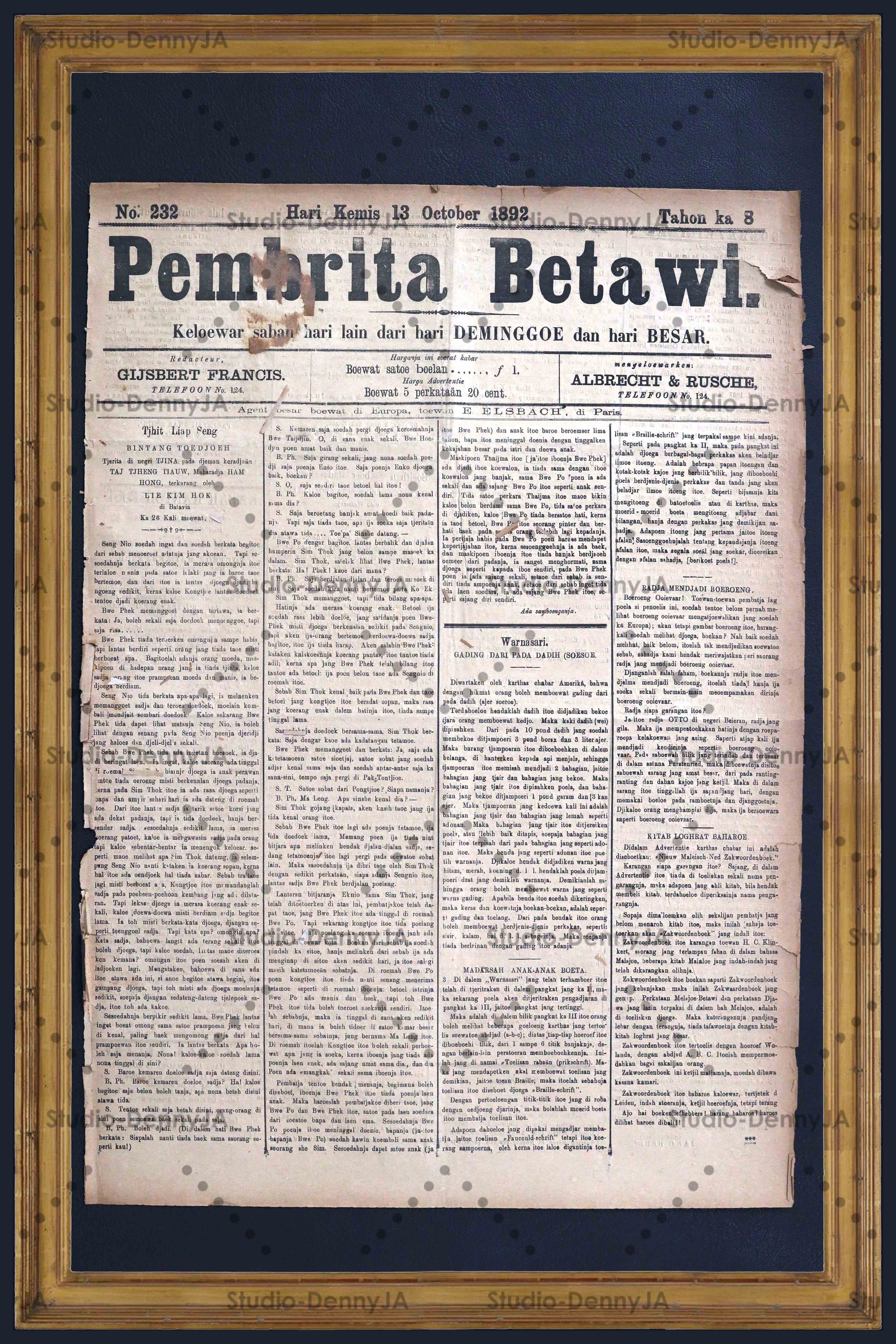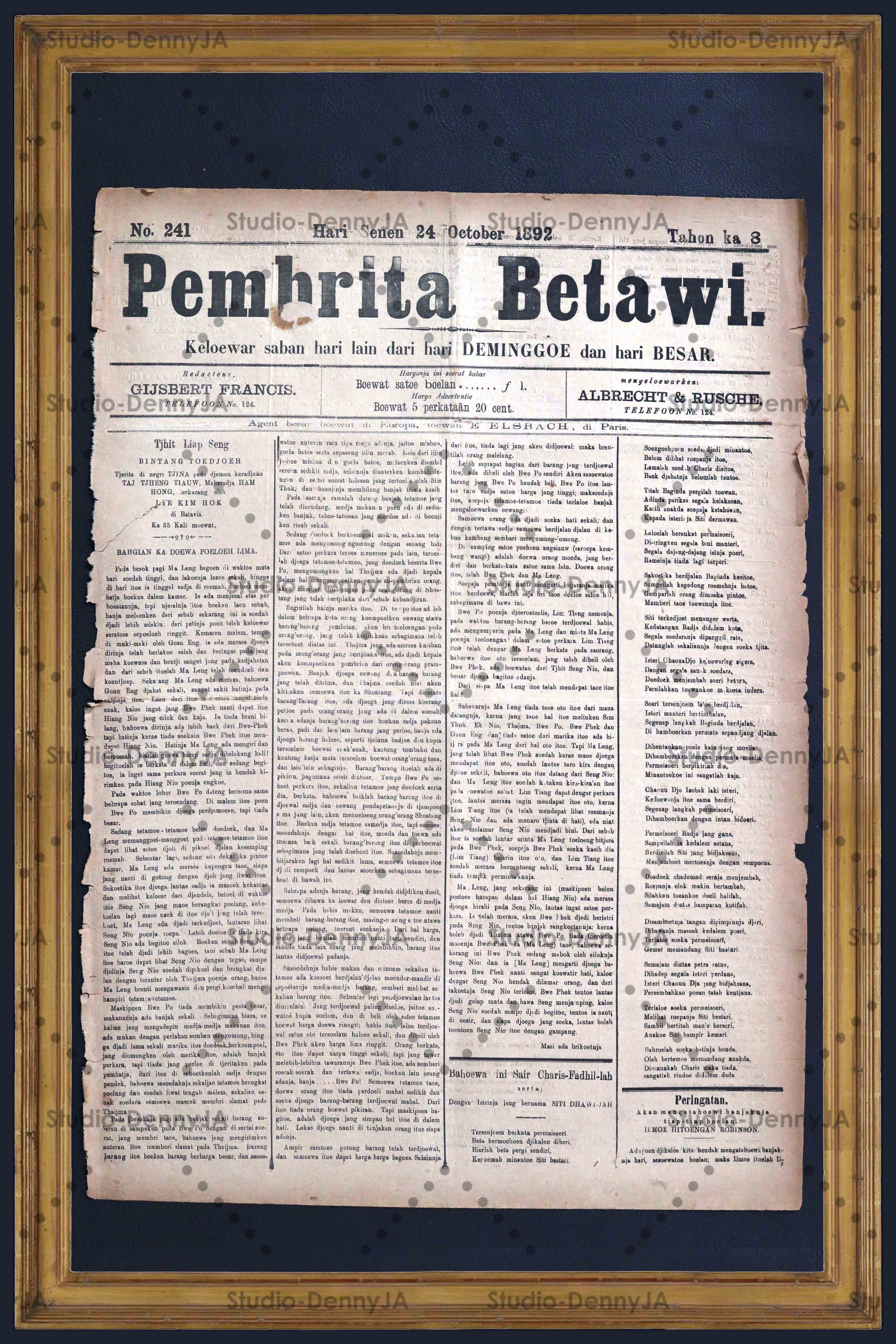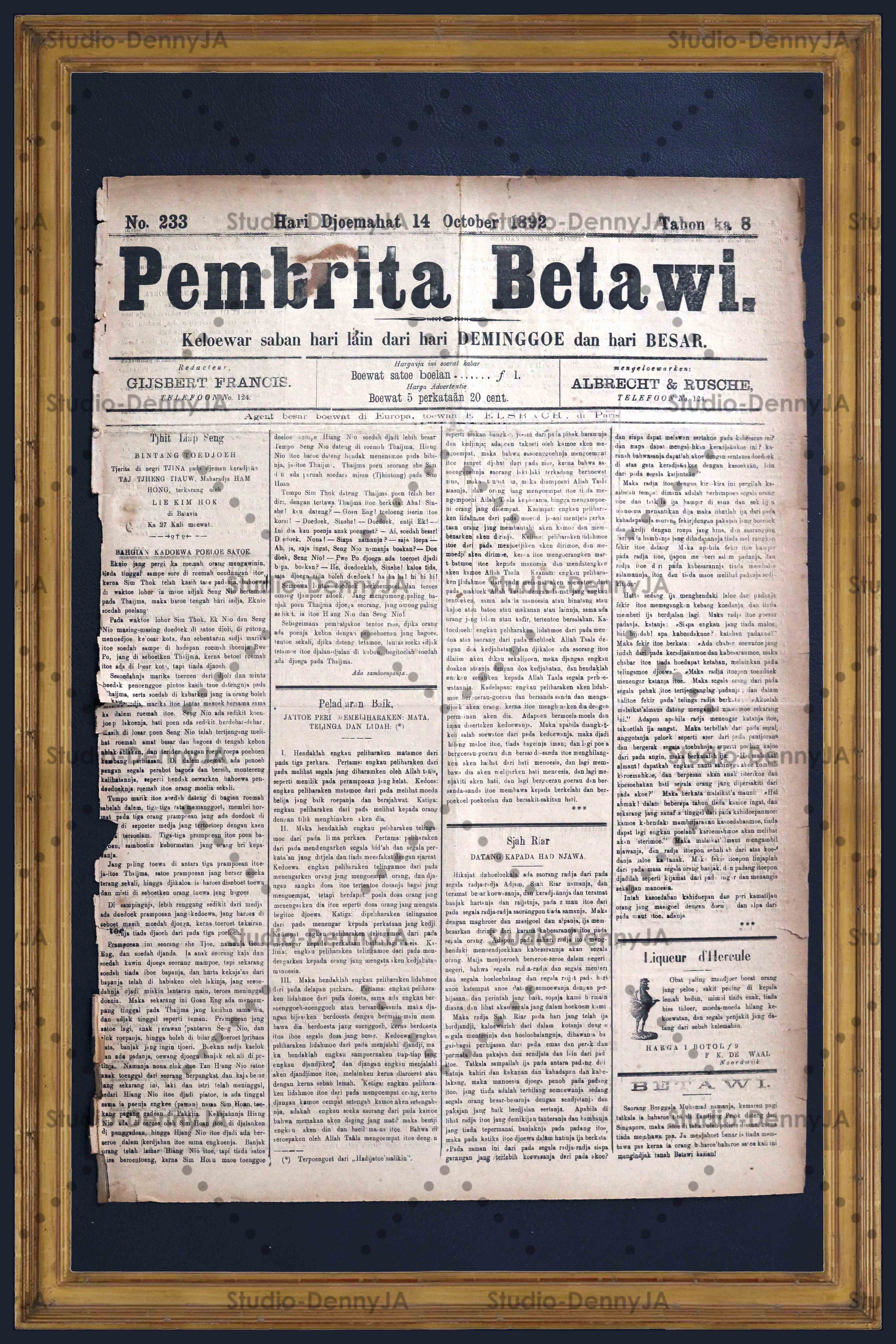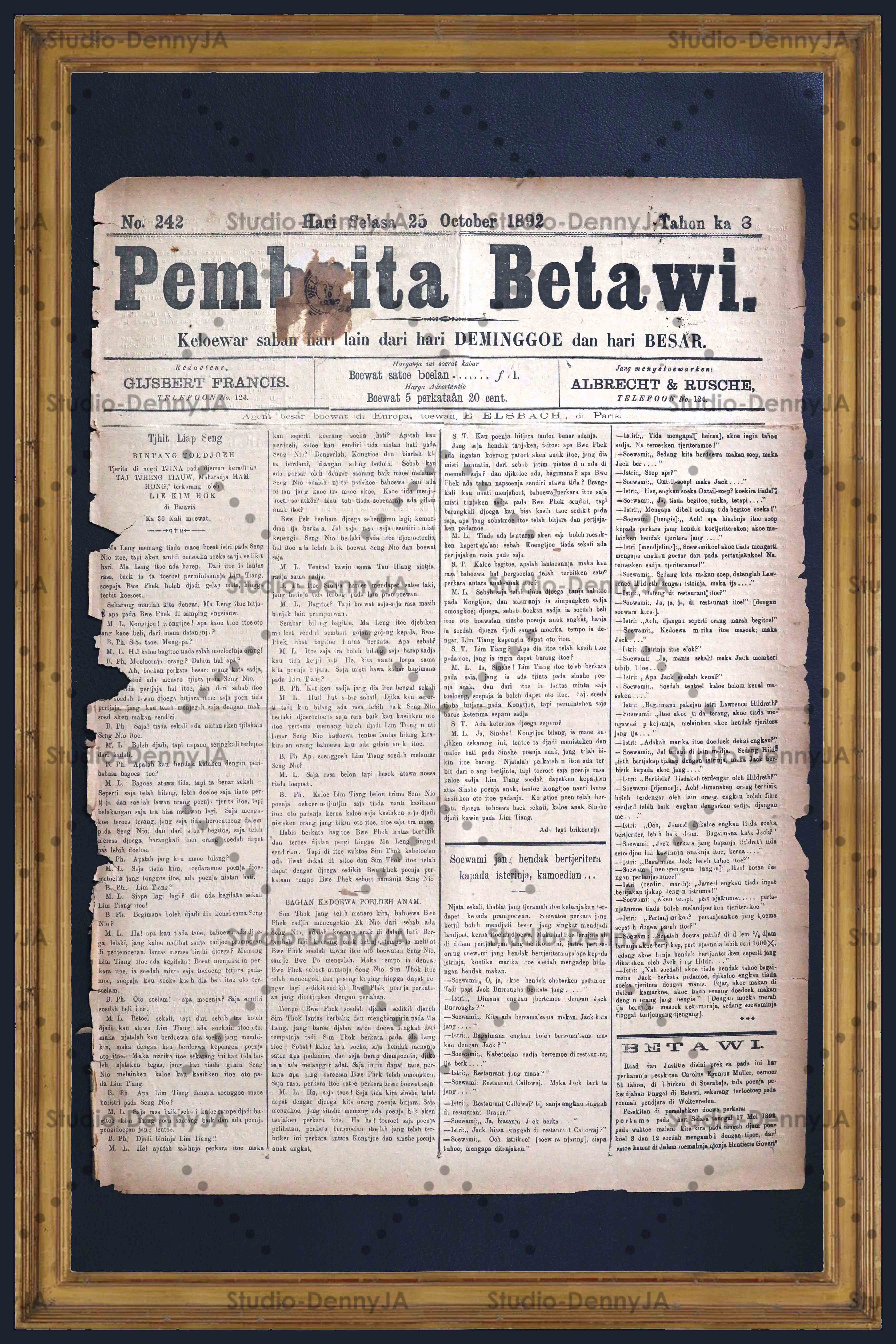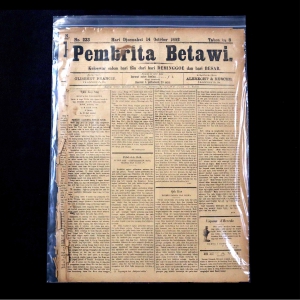
Legendary Newspapers Denny JA Collections
Pembrita Betawi - Batavia (Jakarta)
by JJ Rizal
The Pembrita Betawi newspaper has many unique stories in it. This newspaper was right at the gate of the new era of journalism at that time and arguably done a great deal drove one of the leading "Inlandsche Journalisten" figures of that era, namely R.M. Tirto Adhi Soerjo.
R.M. Tirto Adhi Soerjo, who is renowned as the "Father of the National Press" and was awarded the title of National Hero, has been the editor-in-chief of Pembrita Betawi newspaper since April 1, 1902[1]. It was at Pembrita Betawi that Tirto's skills as an indigenous journalist began to be established, in Pramoedya's language, "Like a butterfly- the butterfly emerges from the pupa." Tirto's idea to establish the first women's newspaper Poetri Indies in 1908, also emerged when Tirto led Pembrita Betawi. The idea was written since he served as editor, namely in Pembrita Betawi edition No. 10, 14 January 1903 with the title "Kemadjoean Perempuan Boemipoetra" (Advancement of Indigenous Women).
It was Pembrita Betawi who previously gave birth to Ferdinand Wiggers[2]. Initially Wiggers was a controlling officer, then succeeded in becoming a journalist and editor in several newspapers, in addition to a well-known literary writer in low-key Malay. Apparently, all of Wiggers' success began when he worked as an editor at Pembrita Betawi on October 31, 1898. It was also at Pembrita Betawi that Lie Kim Hok, a prominent Chinese Malay literary writer, had played a role in his printing press.
This newspaper has been published regularly since December 24, 1884 in Batavia. The original editor was J. Kieffer, who with W. Muelenhoff was a co-manager. Pembrita Betawi was originally published by W. Bruining & Co, then the following year (1885) it was taken over by Muelenhoff. However, this newspaper changed hands many times, among others, to Karscboom & Co.; fell into the hands of Albrecht & Co. (1888), and then taken over by Albrecht & Rusche until the end of his life on December 30, 1916. This newspaper, originally written under the name Pembrita Betawi, was later changed to Pemberita Betawi. The subscription price is 2 gulden a month.
Towards the end of 1913, a new political consciousness grew among the indigenous people in Java. This situation spread confusion among non-native newspapers. Even though Pemberita Betawi was popular and somewhat pro-nationalist, he could not help but feel confused and difficult to compete with newspapers run by natives that mushroomed in 1912 and 1913. However, by 1913, the press in the Dutch East Indies was no longer a monopolistic industry. The birth of Indonesian national consciousness almost simultaneously produced an authentic indigenous press as the spokesperson for the nationalists. Betawi newsmen are at the threshold of a new era of journalism, complete with all the confusion it causes, but nevertheless they have contributed greatly to the birth of Tirto Adhi Soerjo as the Father of the National Press.
At that time, the Chinese press was still dependent on the Chinese readers of peranakan descent. This is different from Malay-language newspapers led by Indos (mix native and European descent) and Dutch-owned newspapers which speak Dutch. The press who want to keep their business, inevitably have to change their news coverage. This means that a more objective style of reporting is needed, even if it does not have to be openly sympathetic to the indigenous political movement. It was in that era that Betawi Newspapers began to include news about the Chinese and opened themselves to receive writings concerning the Indigenous people. In fact, in 1906, Pembrita Betawi published news on the translation of the Holy Qur'an in Japanese and Chinese as symbols of Islam.
[1] Pramoedya Ananta Toer in Sang Pemula (1985: 11) mentions that after leaving STOVIA Tirto immediately started his career at Pembrita Betawi starting as editor, then chief editor replacing F. Wiggers, and finally becoming in charge in 1902.
[2] Wigers played an important role in the press and literature in the Dutch East Indies. The importance of Wigers' role can be seen in the recognition of the magnitude of his role and contribution in giving the Indies color to the Malay language which soon developed into modern Indonesian.

